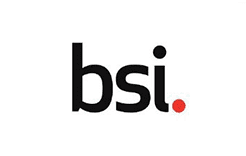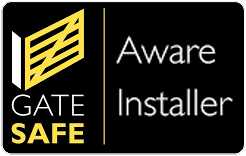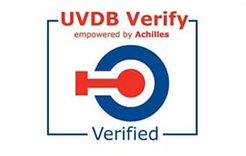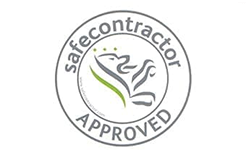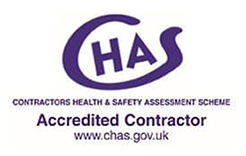ULTIMATION SAFETY

Our Safety Philosophy
At the heart of every ULTIMation design is the overriding concern for the safety of the end user and members of the public, As a bare minimum, ULTIMation products are all supplied with safety systems which comply with current safety guidelines, and it is company policy to continually evolve systems which place us ahead of emerging legislation and guidelines. This allows us to offer products which are amongst the safest in the word. The requirements of the Machinery Directive are paramount, and we constantly monitor legislation for changes that may impact our product range. We also take advice from Gatesafe, the DHF and other trade bodies who specialize in safety matters.
Barrier Safety
Induction Loops
It is common practice to fit induction loops under the road surface to provide added protection to vehicles. As an example, if a trailer stops part way through the barrier, the photocells may see between the vehicle and trailer, and allow the barrier to operate. The addition of an induction loop will act as a second level of safety, and prevent movement until the vehicle has cleared the barrier.
Additional Safety Features
To enhance the standard safety system, clients can add secondary safety items such as a flashing beacon with sounder capabilities, LED boom lights and STOP signs.
If a desktop push button system is chosen, this will also have an integrated emergency stop function, and a deadman keyswitch is also available.

Safety Edges
For plain booms, we can fit a protective rubber safety edge to the underside of the boom. This rubber edge is a Category 3 self monitoring system and will cause the boom to immediately stop movement and return to the raised position if it encounters an obstruction whilst closing. Our PLC system allows us to adjust the response time for this safety system to provide almost instantaneous response to a safety issue.
Safety Photocells
For barriers with a plain boom, we fit a pair of photocells which protect the roadway directly under the boom. The photocells are fitted to the barrier cabinet and to the top rest. Wired photocells are usually supplied, but we can also supply wireless units if it is not possible to cable across the road.
For barriers with a lower skirt, or hi-bar upper and lower skirt, two pairs of photocells are fitted. These are mounted on stand off brackets either side of the boom at different heights to provide maximum protection.
Gate Safety


Safety Edges
Sliding Gates are fitted with 6 safety edges to protect all potential trapping or shearing points. These Category 3 monitoring edges are fitted to the leading edge of the gate leaf, both sides of the drive stanchion on both the entry and exit sides (4 in total), and one to the rear of the gate leaf.
Swing Gates are fitted with Category 3 self monitoring safety edges as follows. Each gate leaf has an edge to both sides of the lower horizontal rail of the frame, and one edge vertically to the leading edge of the leaf.
If any of these devices encounter an obstruction whilst the gate is in motion the gate will immediately stop and then slowly move in the opposite direction to its original motion to clear the obstacle. The standard PLC system allows us to adjust the response time for this safety system to provide almost instantaneous response to a safety issue.
Safety Photocells
Sliding Gates feature 2 pairs of photocells, one on either side of the gate leaf. Fitted at different heights to offer maximum protection, they are flush mounted in the gate drive stanchion and the closing post.
Swing Gates have two pairs of photocells at different heights on the outside of the gate posts. In addition, if required we can supply two free standing posts with a pair of photocells which are mounted clear of the swing arc of the gate inside site.
If any of these devices encounter an obstruction whilst the gate is in motion the gate will immediately stop and then slowly move in the opposite direction to its original motion to clear the obstacle. The standard PLC system allows us to adjust the response time for this safety system to provide almost instantaneous response to a safety issue.
Induction Loops
It is common practice to fit induction loops under the surface to provide added protection to vehicles. As an example, if a vehicle with a trailer stops part way through the gate, the photocells may see between the vehicle and trailer, and allow the gate to operate. The addition of induction loops will act as a second level of safety, and prevent movement until the vehicle has cleared the area. Both sliding and swing gates should have induction loops to both sides of the moving leaf, with double leaf swing gates having a diamond shaped loop in between the swing arc of the leaves.
Additional Safety Features
Automated gates are all fitted with an emergency stop button to the stanchion or gate post, along with a flashing beacin / sounder. Swing gates feature non reducing gap type hinges so that there is no increased risk to trapping between the posts and leaves.
To enhance the standard safety system, clients can add additional safety items such as LED lights and STOP signs the the gate leaves. If a desktop push button system is chosen, this will also have an integrated stop function, and a Deadman key switch is also available. Rubber finger guards can also be chosen between gate posts and leaves.
